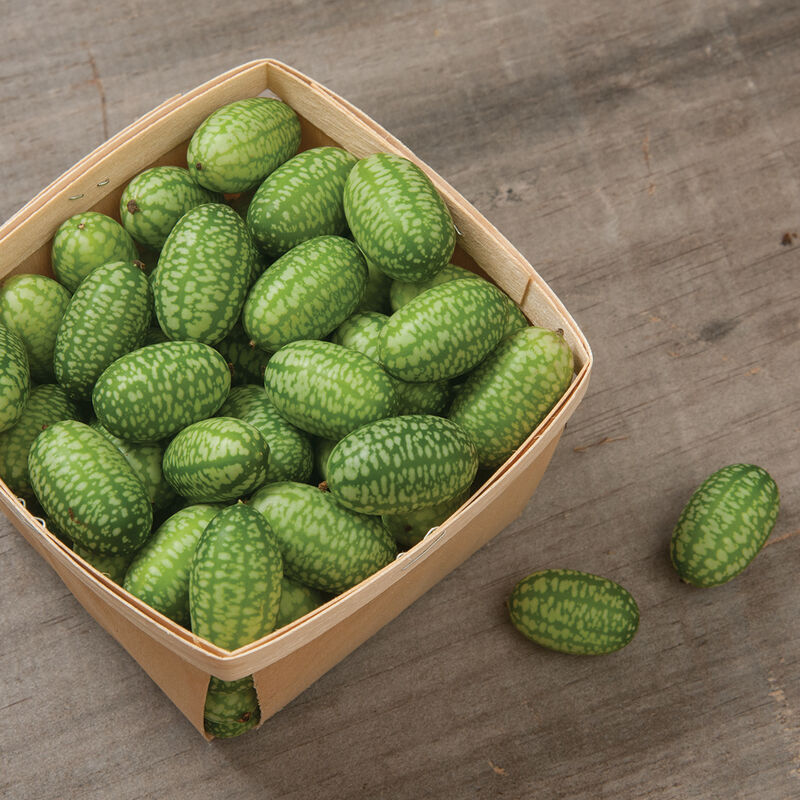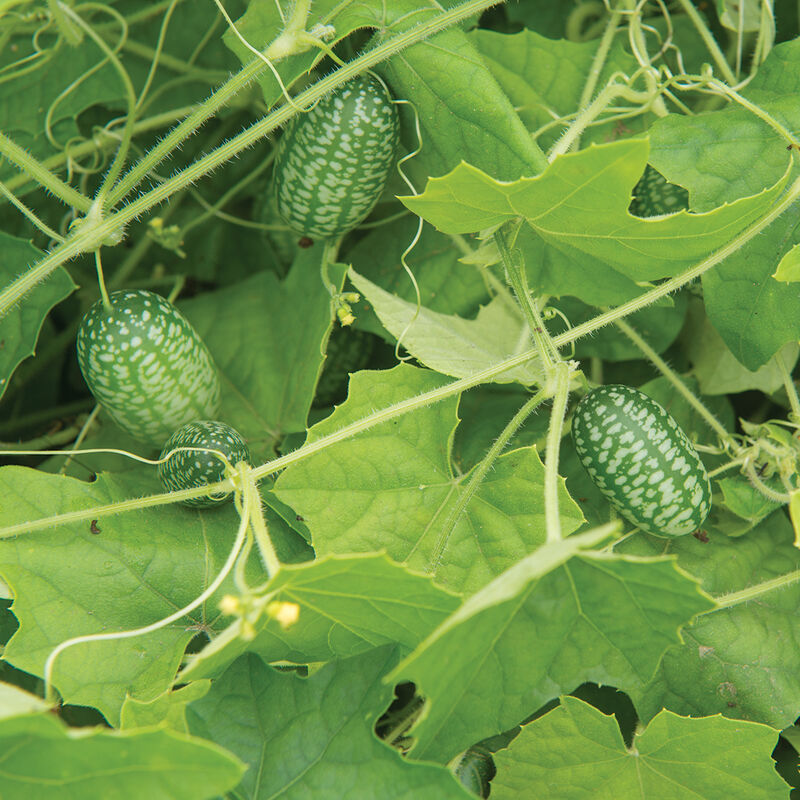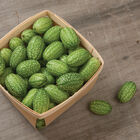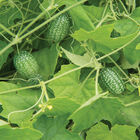Mexican Sour Gherkin Cucumber Seed
Mexican Sour Gherkin Cucumber Seed
A unique specialty cucumber.
Cute 1" long fruits look like miniature watermelons and taste like cucumbers with tangy citrus overtones. Vines start growing slowly but can get up to 10' long. Can be eaten fresh or pickled. Fruits can be sold in half-pint or clamshell containers at markets that appreciate novelty. Also known as the Cucamelon and mouse melon. Not particularly high yielding. Trellising recommended. NOTE: We recommend harvesting these cucumbers promptly as they tend to get seedy if allowed to grow longer than 1".Specs:
SCIENTIFIC NAME:
Cucumis sativus (unless otherwise indicated)CULTURE:
Requires warm, well-drained soil high in fertility, with a pH of 6–6.8. Consistent, adequate irrigation is needed to produce an abundant crop. Cucumbers are very sensitive to cold. Make sure both soil and air temperatures have warmed prior to planting. Using plastic mulch and row covers will greatly enhance the vigor and potential yields of cucumbers by providing warmth and insect protection. For greenhouse or high tunnel production the use of parthenocarpic varieties is highly recommended.DAYS TO MATURITY:
From direct seeding; subtract about 10 days for days to maturity from transplanting.TRANSPLANTING:
Sow indoors in 50-cell plug trays, 1–2 seeds/cell, 3–4 weeks before transplanting. Keep temperature above 70°F (21°C) day and 60°F (16°C) night. Transplant 12" apart in rows 5–6' apart. Do not disturb roots when transplanting.DIRECT SEEDING:
Wait until soil is warm, at least 70°F (21°C). Cucumber seeds will not germinate at a soil temperature below 50°F (10°C). Sow 2 seeds/ft., 1/2" deep, in rows 6' apart. Thin to 12" apart.AVG. DIRECT SEEDING RATE:
30 seeds/15', 100 seeds/50', 250 seeds/125', 500 seeds/250', 1,000 seeds/500', 15M/acre at 2 seeds/ft. in rows 6' apart.INSECT PESTS:
Exclude cucumber beetles with row covers at planting, or control with insecticides such as pyrethrin or azadirachtin.DISEASE: Practice crop rotation, residue sanitation, and choose disease-resistant varieties. Control insect pests to help prevent bacterial wilt. We only stock seed lots that have been tested free of Cucumber Green Mottle Mosaic Virus in a sample of 2,000 seeds. NOTE: A disease-free test result does not guarantee a seed lot to be disease-free, only that in the sample tested, the pathogen was not found.HARVEST:
Once fruit bearing begins, pick daily.POST HARVEST:
Hold cucumbers at 50–55°F (10–13°C) and 90% relative humidity for up to 2 weeks.NOTE:
If parthenocarpic cucumbers cross-pollinate with other cucumbers, they will yield seeded fruits. Generally, seedless types are grown separately in greenhouses or hoophouses with insect screens installed to prevent cross-pollination of seeded and seedless varieties.TRANSPLANTS (AVG.):
85 plants/100 seeds.SEEDS/LB. (AVG.): 20,200.PACKET:
30 seeds, unless otherwise noted.Johnny's is committed to your success, every step of the way.
We want you, our customer, to be 100% satisfied with all of our seeds, tools, and supplies.
If anything you purchase from us proves unsatisfactory, we will either replace the item or refund the purchase price.






